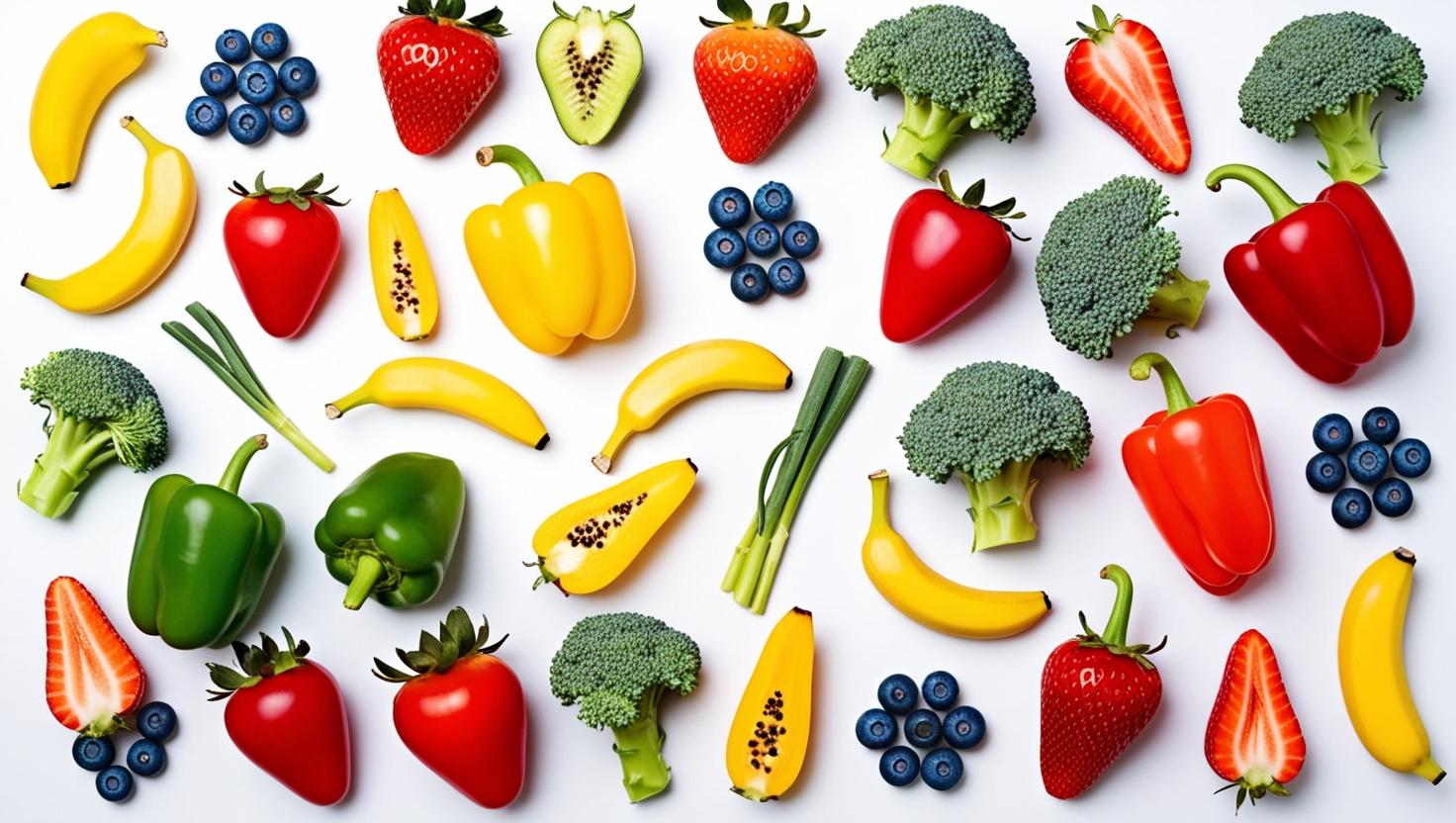As a parent, few things are as concerning as noticing your child isn’t keeping up with growth milestones. Pediatric growth charts - tracking height, weight, and BMI - are vital tools to assess development in your little champ. But they can also spark anxiety if your little one seems to lag behind peers! While genetics, health conditions, and activity levels play a role, nutrition is often the cornerstone of healthy growth in a child. If your little one is falling short, incorporating nutrient-dense superfoods into their diet could help bridge the gap naturally. Here’s how to fuel their growth spurt with science-backed, delicious options that align with your family’s health goals. These superfoods for kids' growth are easily available and don’t require too much of your work in the kitchen.
But first,
Understanding Growth Charts: When Should You Worry?
Pediatric growth charts compare your child’s measurements to averages for their age and gender. Falling below the 5th percentile or showing a sudden drop in trajectory might signal undernutrition, hormonal issues in adolescents, or other concerns.

However, growth isn’t one-size-fits-all.
Before panicking, do these:
- Consult a Pediatrician: Rule out medical causes like thyroid disorders or food intolerances.
- Track Trends: A consistent growth curve (even if lower) is often healthier than erratic spikes/drops.
- Assess Diet: Are they getting enough calories, protein, and micronutrients? If not, build a diet with Superfoods for children, so that they can get all the nutrients necessary for their growth and development.
If nutrition is the primary hurdle, superfoods for kids' growth can be a game-changer.
The Role of Superfoods in Childhood Growth
Superfoods are whole, minimally processed foods packed with vitamins, minerals, antioxidants, and healthy fats essential for growth.
They support:
- Bone Development: Calcium, vitamin D, magnesium.
- Muscle Growth: High-quality protein, iron, and B vitamins.
- Brain Health: Omega-3s, choline, zinc.
- Immune Function: Vitamins A, C, E, and probiotics.
Unlike empty calories from fried or baked snacks, superfoods deliver maximum nutrition in kid-friendly portions.
10 Superfoods for Kids to Boost Healthy Growth
Let’s explore our top picks in superfoods for kid’s growth.
#1 Millets
Millets, packed with fiber, iron, calcium, and protein, are the perfect superfoods for kids to fuel their growth. They boost digestion, energy, and bone health. Millets like ragi and jowar are gluten-free and easy to digest. Add them to their porridge, pancakes, or snacks. These ancient grains fuel active kids while supporting immunity and growth.

#2 Broccoli
Packed with vitamins C and K, fiber, and antioxidants, broccoli is the greenest superfood for kids that even a picky eater will like. They support immune health, bone development, and digestion. Steam or roast broccoli florets with olive oil and a sprinkle of cheese, or blend into soups and pasta sauces for a veggie boost kids won’t notice!
#3 Spinach
Spinach is another green friend that the body likes, but kids might not! Rich in iron, folate, and magnesium, spinach aids energy production, red blood cell formation, and muscle function. Vitamin A in spinach promotes healthy vision.
But how to make kids eat spinach without all the drama?
- Add raw spinach leaves to smoothies,
- Mix chopped spinach into scrambled eggs
- Add spinach puree to the pasta sauce
- Make spinach paratha or spinach puris
- Sauté finely chopped spinach into lasagna or quesadillas
#4 Nuts & Seeds
A powerhouse of nutrients, nuts and seeds are essential for kids' growth, offering healthy fats, protein, vitamins, and minerals. Here are some nuts and seeds that fuel physical growth and mental development in kids
- Walnuts: Rich in omega-3s for brain health and magnesium for bone strength. Add crushed walnuts to oatmeal, muffins, or yogurt. Choking risk: Finely chop for young kids.
- Almonds: High in vitamin E (skin health) and calcium (bone growth). Use slivered almonds in stir-fries, almond butter on toast, or almond flour in baking.
- Cashews: Provide iron (energy) and zinc (immunity). Blend into creamy sauces, mix into rice dishes, or pair with dried fruit for snacks. Soak for easy digestion.
- Chia Seeds: Packed with omega-3s, fiber, and calcium. Soak to make chia pudding, thicken smoothies, or sprinkle on cereal.
#5 Almond Butter
A nutrient-dense alternative to peanut butter, almond butter provides healthy fats, protein, and vitamin E for brain health and skin protection. This superfood for kids is easy to use and quite versatile. Spread on whole-grain toast, swirl into oatmeal, or use as a dip for apple slices. Opt for unsweetened varieties to avoid added sugars (check for nut allergies first).
#6 Berries
Blueberries, strawberries, and raspberries are bursting with antioxidants, fiber, and vitamin C to boost immunity and gut health. Their natural sweetness makes them ideal for yogurt parfaits, pancakes, or homemade popsicles. Add berries to smoothies and shakes for a quick, nutrient-rich snack.

#7 Citrus Fruits
Oranges, clementines, and grapefruits are vitamin C powerhouses, crucial for collagen production (skin/bone health) and iron absorption. Their juicy appeal helps keep kids hydrated. Serve as fresh segments, blend into fruit salads, or squeeze into homemade lemonade for a zesty, immune-boosting treat.
#8 Lentils
Lentils are a staple in many Indian households. They are high in plant-based protein, iron, and fiber. Lentils support muscle growth and sustained energy. They can be enjoyed just on their own or as an accompaniment for rice or roti. Lentils’ mild flavor also blends well in soups, stews, or mashed as a taco filling. Pair lentils with vitamin C-rich foods (e.g., tomatoes) to enhance iron absorption, ideal for vegetarian/vegan diets.
Detailed Protein Content of Lentils:
- Horse Gram (Kulthi Dal): 22-25g of protein per 100g.
- Black Gram (Urad Dal): 26g of protein per 100g.
- Red Lentils (Masoor Dal): 25g of protein per 100g.
- Green Gram (Moong Dal): 24g of protein per 100g.
However, the bioavailability of lentils is far less than you think. Bioavailability of lentils refers to the proportion of their nutrients that your body can actually absorb and use. Lentils contain beneficial compounds but also some antinutrients like phytates, which can hinder the absorption of minerals like iron and zinc. Cooking, soaking, and sprouting lentils help reduce these antinutrients, thus improving how well your body can access the nutrients they offer.
Here's what the actual protein your child is getting from lentils.
- 1 bowl of cooked Horse Gram (Kulthi Dal) will give 5-6g of protein
- 1 bowl of cooked Black Gram (Urad Dal) will give 6.5g of protein
- 1 bowl of cooked Red Lentils (Masoor Dal) will give 6.25g of protein
- 1 bowl of cooked Green Gram (Moong Dal) will give 6g of protein
#9 Sweet Potato
One vegetable you can make your child fall in love with is the humble sweet potato. Loaded with beta-carotene (converted to vitamin A), sweet potatoes promote eye health and immunity. Their natural sweetness appeals to kids - roast as fries, mash with cinnamon, or bake into muffins. The fiber content aids digestion, making them a versatile, nutrient-dense staple.
#10 Greek Yogurt
Probiotics are essential for a healthy gut and proper growth and development. With double the protein of regular yogurt and probiotics for gut health, Greek yogurt strengthens bones (thanks to calcium) and aids digestion. Mix with honey and granola, use as a base for dips, or freeze into yogurt bites with fruit for a creamy, protein-packed snack.
Tips for Picky Eaters: Making Superfoods Kid-Friendly
Even nutrient-packed foods won’t help if your child refuses to eat them! With picky eaters it can be tricky.
Try these strategies:
- Sneak It In: Puree spinach into smoothies, mix chia seeds into pancake batter, or grate carrots into muffins.
- Make It Fun: Create “rainbow plates” with colorful fruits/veggies or use cookie cutters for shapes.
- Involve Them: Let kids pick superfoods at the store or help cook (e.g., stirring oatmeal).
- Dip It: Pair veggies with hummus, almond butter, or yogurt-based dips to make food fun.
What to Avoid: Foods That Hinder Growth
You try to give healthy food to your child, yet their growth isn’t on par. Did you know that certain foods can sabotage growth efforts? Read the labels of snacks, health drinks, or juices before you give them to your kids.
- Sugary Snacks: Cause energy crashes and displace nutrient-dense foods.
- Processed Carbs: White bread, crackers, and pastries lack fiber and protein.
- Excessive Juice: High sugar, low fiber—opt for whole fruits instead.
Your Superfood Toolkit - Supafuelz Makes it Easy
At Supafuelz, we are parents looking for the best healthy and nutritious solutions for our kids. We’re committed to supporting your child’s growth journey with wholesome, convenient solutions.
Supafuelz has made incorporating superfoods for kids easy and convenient. Our protein-rich health drinks for kids are made from premium whey protein, imported from the USA, fibre-packed millets, and jaggery that doesn’t give a sugar rush.
Our no-bake cookie mix is filled with the goodness of oats, millets, almonds, and cashews. All you need to do is pour, mix, and roll into bite-sized cookies or laddoos. They are super-nutritious as snacks and can be added to your kids’ lunch boxes.
Pic Source: Supafuelz
Explore our Supafuelz functional foods today - because every child deserves to thrive, one bite at a time.







Leave a comment
This site is protected by hCaptcha and the hCaptcha Privacy Policy and Terms of Service apply.